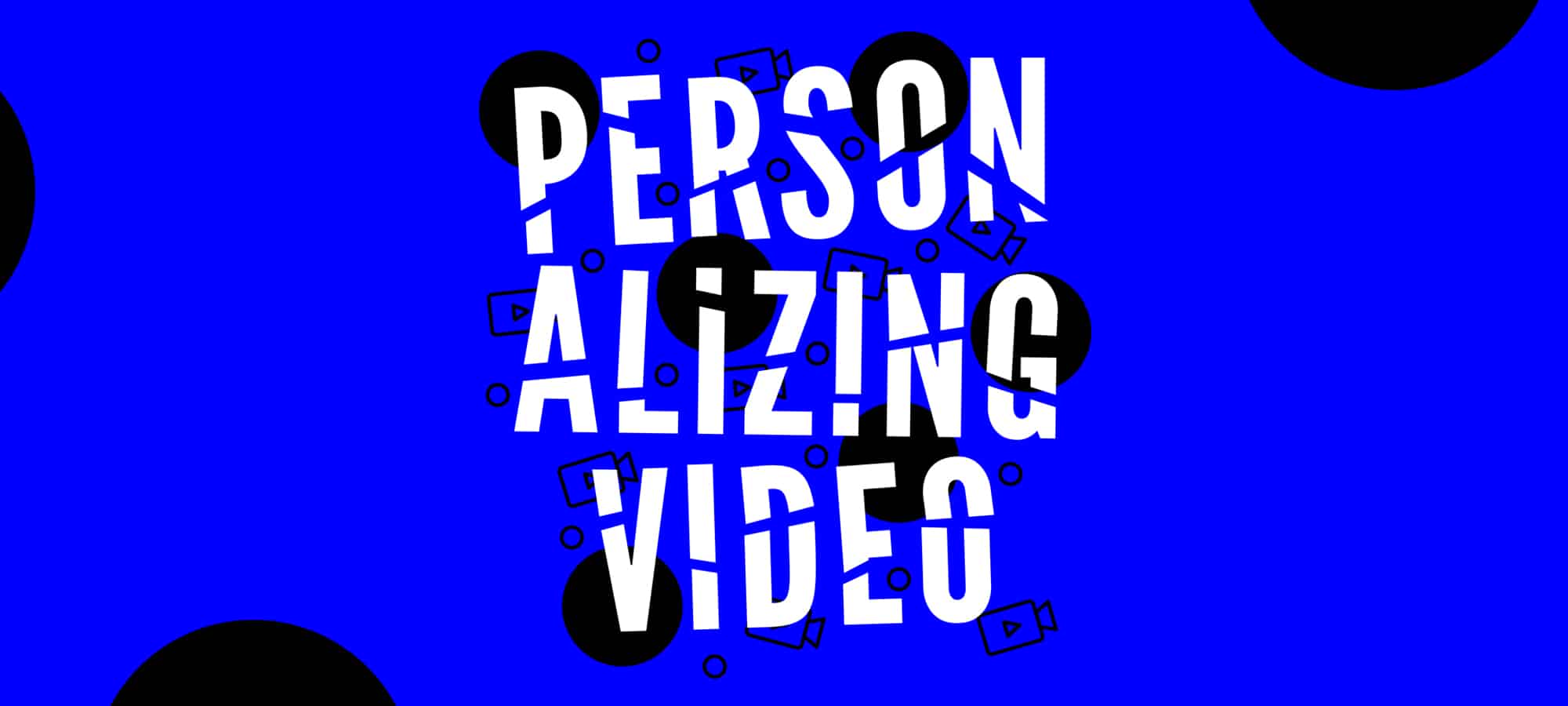Personalizing Video

In the advertising and marketing world, videos are both expensive and widely-consumed. So when it comes to personalized content, video is often assumed to be out of the question. Maybe the idea of creating a broadly-marketed, yet deeply relatable advertisement sounds like an oxymoron. But the idea of “targeting the individual” must be impractical, because how can a single studio create a new video for each individual customer?
The reality is, it can be done. And it has been done. Here are two examples of how to accomplish both of those approaches with video.
Example A:
Create a general template video or animation using green-screen placeholders instead of images. Consumers can then upload their own photos in place of the green screens to become a part of the ad themselves. Then give them an easy way to share their creation with others, via social media or email. (Think: Facebook’s “Year End Review.”)
This approach converts brands into a vehicle that brings people together. It gives consumers a consensually-personalized experience that allows them to spread positivity to their loved ones through the sharing of high-quality video-messages, bolstering brand engagement and perception.
Pros:
- A feel-good ad experience that reaches each consumer at a personal level.
- More likely to be shared by consumers, if done properly.
Cons:
- Requires web-programming, on top of film and/or animation.
- Requires advertising for the advertisement.
Consumers need to know about the program before they can interact with and share the end result. - This means utilizing general templates for a large audience to transform and shape themselves, so the brand message will be limited.
Possible Approach:
- Create the template video(s) that allows for several user-uploaded images and even user-generated text that can be spliced in or applied at the end.
Think: “Personalized Greeting-Card” for any holiday or event. The video would be shot just like any other. But when it comes time to show photos, one would simply shoot a framed, green-screen placeholder instead. This would work with animations as well. - Once the video is finished, hand it off to a programmer. Have him or her create a landing-page on your website that allows users to upload their photos from their phone or desktop to be inserted into the video.
- Promote the landing-page on your website’s homepage and social media.
Example B:
Create a documentary-style commercial that depicts how one specific consumer uses a product/service, highlighting how their life has been improved by said brand. This would need to be a real consumer with a real story, so as to avoid the video feeling disingenuous.
While focusing on a single person doesn’t inherently connect with each consumer at a personal level, it does show a practical, real-life example of someone the brand’s target demographic can relate to, without having their own personal information placed in front of them.
Pros:
- A more traditional approach. No web-design/programmer needed.
- Conveys a stronger narrative that reaches consumers at an emotional level.
Cons:
- Involves traveling to subject’s location or paying for a subject to travel to your location.
- Not inherently personal to each consumer.
- More likely to be viewed as a traditional advertisement by consumers.
Possible Approach:
- Create a social media post, asking followers to share stories about how they use a brand’s product/service. Tell them they may be selected to be featured in an ad.
- Send a team to interview the subject and gather footage to be able to convey their story in a dynamic manner.
- Distribute within the proper channels for the advertisement’s scope.
Like with all advertisements, brands need to know their product and the audience they’re trying to reach before choosing a strategy. If selling food or clothing, for example, a company might be more suited for something like Example A, which places more weight on branding.
If selling tools or services, on the other hand, Example B might be the way to go, since it highlights the product or service and how it meets the needs of one’s target demographic.
Both approaches use varying degrees of personalization. Both will reach into the lives of audiences. Neither will scare away consumers.